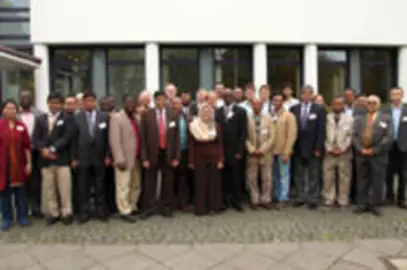Cutting-edge research on marginality by ZEF researchers
November 11, 2013.
During an international conference on Agricultural Technology Innovations for Poverty Reduction and Sustainable Productivity Growth, organized by and at ZEF from November 6-8, 2013, a new book on 'Marginality. Addressing the Nexus of Poverty, Exclusion and Ecology' by von Braun, Joachim; Gatzweiler, Franz W. (Eds.) was launched.
At the well-visited launch event at ZEF, several authors high-lighted their findings published in the book. Editor and ZEF-director Joachim von Braun summarized the main messages the book aims to convey: Marginality and marginalized people have to be recongnized; The framework of actors/agents, institutions and rights has to be clarified; A toolbox of interdisciplinary approaches is needed; We have to be realistic about what can be achieved in which time frame.
Co-author Akhter U. Ahmed from the IFPRI office in Dhaka, Bangladesh, showed up-to-date statistics on where and how the poor live but also on trends over the past 20 years. Encouraging are the relative improvements in East and South Asia, whereas sub-Saharan Africa is lagging behind (see chapter 6 The Poorest: Who and Where They Are?; Akhter U. Ahmed, Ruth Vargas Hill, and Farria Naeem). In terms of absolute numbers, Asia is still topping the list of poverty: 78% of the world's poor (who live on less than 1.25$ per day) live in 10 countries only, most of them in India and China. Poverty is not only a rural phenomenon anymore. Especially in Africa, poverty in urban areas is rising. Still, 41% of the poor live in rural areas, 26% of them in India and 15% in China.
The concept of marginality helps to understand the causes of poverty and therefore to address them in a better and more effective way. Co-editor Franz Gatzweiler emphasized that the efforts should not only focus on needs of the poor, but also on their capacities and opportunities. The book goes ahead with this approach.



